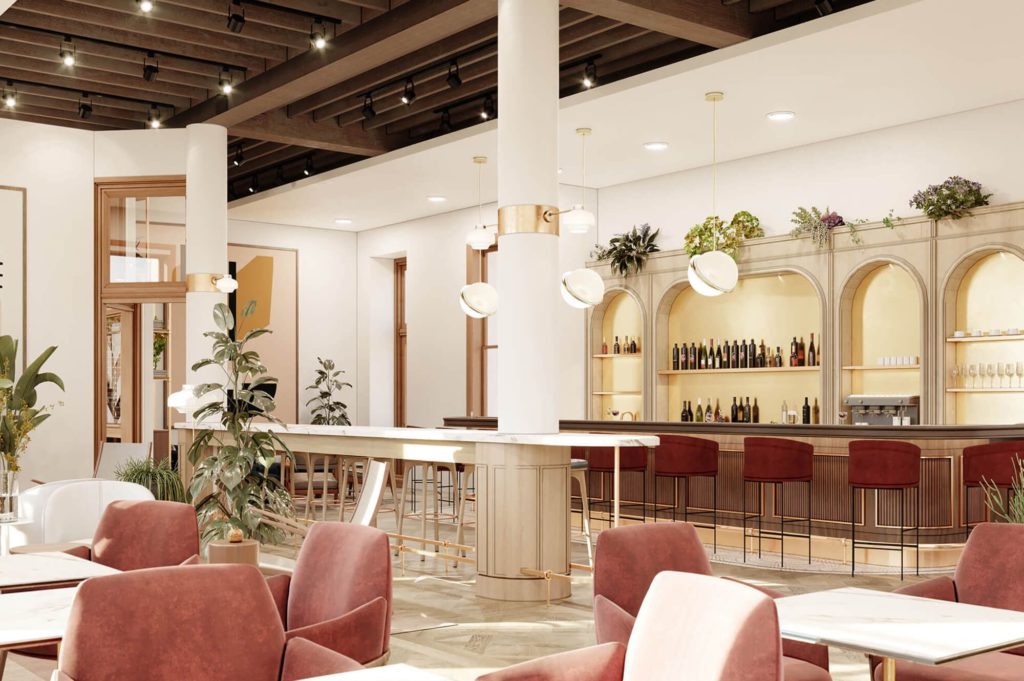CoWorking space operators continue to blur the line between a co-working office environment and a Social Clubs, but why? Is it work? Is it play? What’s the deal?
Many of these coworking companies still have “traditional coworking” which is almost an oxymoron in itself, the coworking operators have begun to offer customized dining offerings, guest speakers and event planning, and extended conference areas, all as part of the same umbrella of “coworking”.
“A lot of our clients and individuals that are using these spaces don’t necessarily want to go to one place during the day to work and another place at night to socialize. They want it all to be there all the time,” said Jennifer Frisk, a managing director at Newmark Knight Frank as quoted by our friends over at the LA Business Journal.
“It’s not like I see them (becoming) a social place all of the sudden,” Frisk said of coworking outposts, “but they have always tried to incorporate things outside of work.”
Some of these new-age office space companies whose name doesn’t begin with “We” and end with “Work” include The-Wing, Convene, and NeueHouse, with locations downtown and in (West) Hollywood, and the Arts District, all of whom are blending the line of demarcation between social club and work environment.

NeueHouse DTLA Bradbury Building Penthouse 
NeueHouse DTLA Bradbury Building Salon 
NeueHouse DTLA Bradbury Building Hallways 
NeueHouse DTLA Bradbury Building Stairwell Hero
Does Co-Working Work? Does WeWork Work? Work Werk Twerk?
The question of whether a coworking environment actually works is a valid one after we’ve seen so many companies teeter between opting into them to simply cutting their investment and shifting back to traditional workspaces.
The Economics
The basic economics and general business proposition of CoWorking certainly makes sense; companies want to forsake their larger permanent office complexes and would rather pay for their employees to move into flexible smaller spaces, at a variety of locations, with flexible daily use. Theoretically, CoWorking is supposed to be able to provide this type of smaller divisible space to companies at a lower cost than traditional large 5-10 year commercial leases in which the tenant is responsible for the buildout, finishes, sometimes maintenance, etc.
Our contention after some economic introspection leads us to believe that for a CoWorking model to be successful, there must be 4 conditions that mandatorily must be met in the given market.
- CoWorking businesses must be able to pay a 1.25x multiplier for space as a traditional company would to occupy the same space in order to acquire it from landlords and maintain appeal despite the higher volume and assumption of higher liability and risk.
- Second, CoWorking operators have to rent that space at a part-time rate to
(relocating) small businesses, freelancers, and/or corporate tenants at a rate much higher than the full-time rent they pay landlords for. Our numbers come in at a 2.4x the rate being paid to a landlord. This takes into account marketing expenses, overhead, staff, operations, security, etc. and all things in order to operate a viable business. This rent differential can be less than the aforementioned only to the extent they are successful at keeping space continuously occupied through hoteling. - The higher the rent being charged, the more hidden the direct costs must be to the end consumer renting it. The economics look too funky for a business to examine the sheer dollar per square foot value compared against a non-operated traditional commercial lease. The range difference is anywhere from 5x to 15x. For example, a core & shell space from a commercial landlord may typically run $4/S.F. with a 5-year term. A coworking rate when calculated in dollar per square foot would roughly calculate out to be $25/S.F. with no long-term commitment, a fully built-out space, coffee, a receptionist, security, WiFi, furniture, etc.
- Finally, and this is the most difficult point to quantify, but the gig-economy must continue to flourish at an N0 rate that facilitates a cultural migration and support of freelancers, entrepreneurs, and capital funding. Without the upfront capital funding being poured into both, CoWorking operators and the small businesses/startups that occupy them, you’d have a dead market.
And there you have it.
The Jury is still deliberating on the coworking. It seems to have already decided on working from home. For example, IBM called thousands of remote workers back to its office this spring, other companies, such as the one behind WordPress, disbanded their offices and had everyone work from home.
Check out “Water Cooler” effect from Harvard Magazine.
So the jury is a long way from coming to a full verdict on its stance of coworking, but before it’s out… coworking seems to be evolving itself at a faster pace than industry experts can keep. Its evolution towards a more socially driven work environment may find itself a snug space between members-only clubs like SoHo House and traditional office space. Maybe… just maybe… perhaps even a wedged space between apartments and micro-living / shared living can be tangled up in this web. When we get into discussions of integrated living, we’ll really go crazy. This is what happens when you put an Architectural Engineer into Commercial Real Estate and arm him/her with marketing expertise. Just to humor us here at V7, check out how some companies are trying to lure millennials: offering them offices that double as homes… WTF?!
IBM, remote-work pioneer, has called thousands of employees back to the office
IBM Corporate Headquarters



